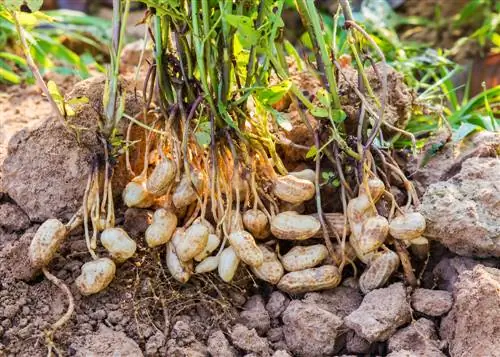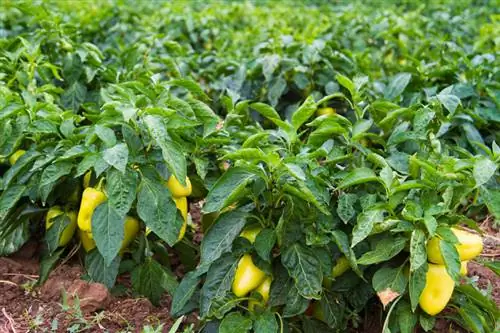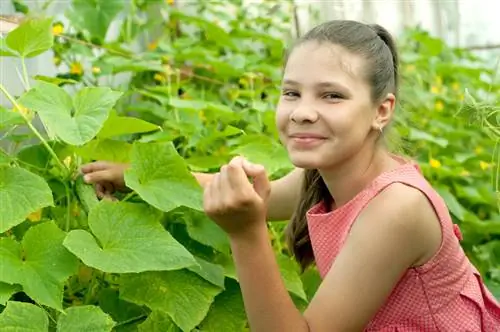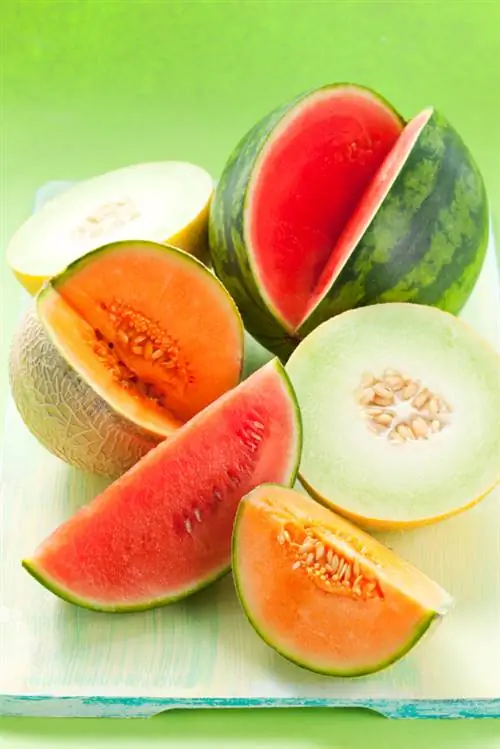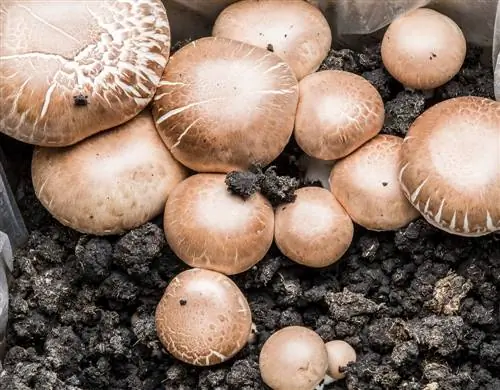- Author admin [email protected].
- Public 2023-12-16 16:46.
- Last modified 2025-01-23 11:22.
Whether as a he althy snack, as peanut butter or in muesli: peanuts have become an integral part of the diet for many people. Have you ever thought about where the easy-to-crack nuts grow and whether it might be possible to grow them in the garden?
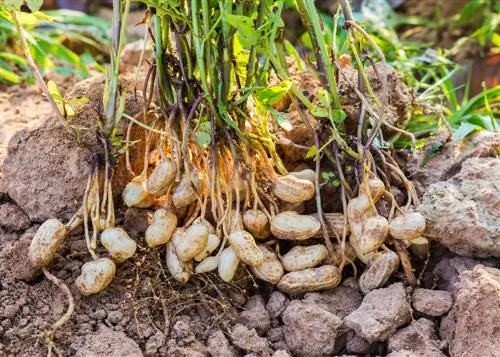
How and where do peanuts grow?
Peanuts grow underground on a fruit support that burrows into the ground after the plant has flowered. To grow them yourself, you need fresh seeds, a protected, warm and sunny location and humus-rich, loose soil. The harvest takes place after about six months.
Peanuts aren't actually nuts at all
Botanically speaking, peanuts are not nuts at all, but, like peas and beans, legumes. The English name Peanut, which literally means something like “pea nut”, suggests this.
However, peanuts actually thrive in the soil. However, the nuts do not form on the taproot of the mother plant, as is the case with potatoes. As soon as the bright yellow flowers of the peanut plant bloom, the base of the carpel bulges and forms a one to twenty centimeter long fruit carrier (carpophore). This curves downwards and drills into the top layer of the soil.
Here the seeds continue to develop in a woody shell, well protected from predators. The mother plant dies after a year and the young peanut plant takes over its good location through this trick of nature.
Growing peanuts in your own garden
If it is warm enough in the region where you live, you can also grow peanuts yourself here in Germany.
Growing indoors
For this you need fresh peanuts, which you can get from specialist seed shops. It continues as follows:
- Peel the nut and put it in a pot with moist cactus soil.
- Cover with a transparent film.
- Place in a warm, very bright place.
- Air daily to prevent mold from forming.
- Wet the soil regularly with a sprayer (€9.00 on Amazon).
- Once the seedlings have reached a size of ten centimeters, put them outside for a few hours on warm days.
Continue to cultivate peanuts outdoors
In the garden, peanuts also need a well-protected, warm and sunny place. A loose, humus-rich soil is ideal.
- The small peanut plants are placed in the bed as soon as the temperature reaches an average of 20 degrees during the day.
- In our latitudes this is usually the case from mid-May or early June.
- The planting distance must not be less than 25 centimeters.
- Heck the soil around the plants regularly so that the carpophores can penetrate easily.
- If new flowers no longer form, pile them up lightly.
Watering and fertilizing
- Moisten only the top few centimeters of the soil and occasionally allow the substrate to dry completely.
- Peanuts are quite frugal. In June, fertilization is carried out sparingly with an organic fertilizer.
The Harvest
The peanut takes about six months from sowing to harvesting. If the mother plant starts to wilt and turns yellow, the time has come: Use a digging fork to get the entire plant out of the ground, shake off the soil and hang the peanut plant up to dry for about two weeks. The seeds can then be easily removed and dried for another two weeks.
Tip
The nuts are not edible when fresh and quickly become moldy. Therefore, quickly roast the peanuts in a pan over medium heat for about twenty minutes.

